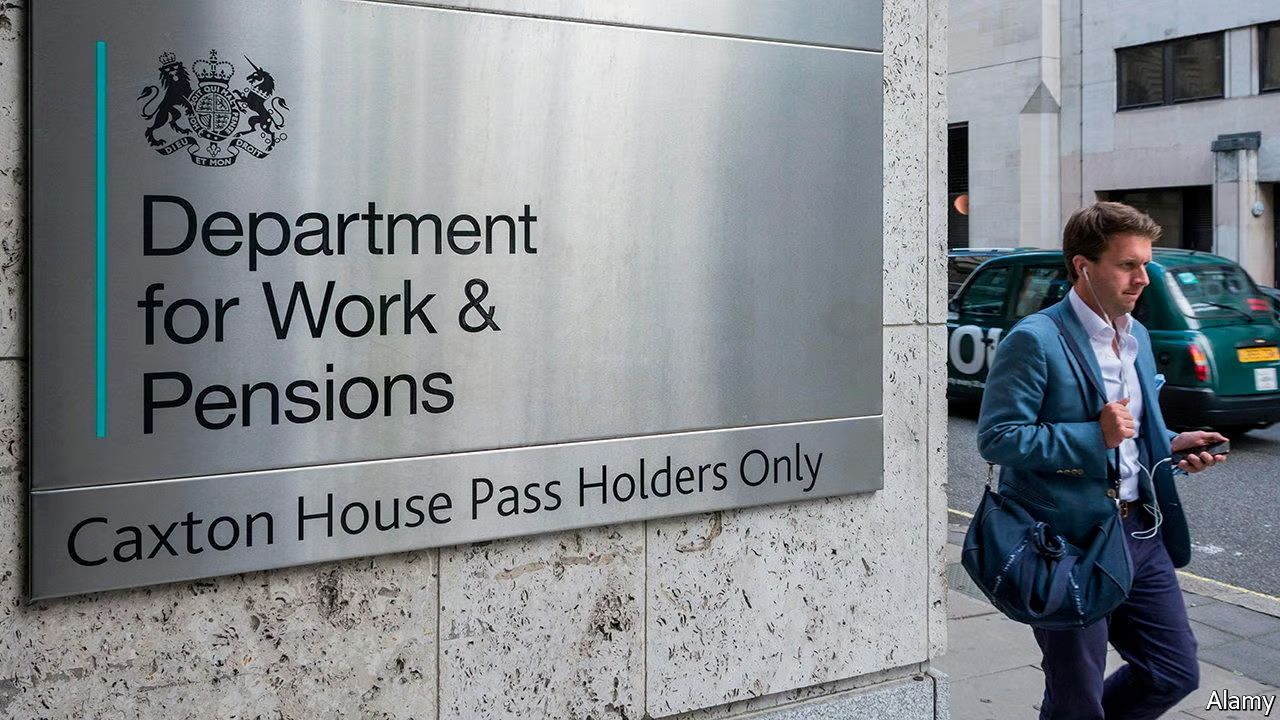

Finance
How Do Pension Funds Invest In Infrastructure?
Published: January 23, 2024
Learn how pension funds invest in infrastructure to diversify their finance portfolios and achieve long-term growth. Discover the strategies and benefits of infrastructure investments in the finance sector.
(Many of the links in this article redirect to a specific reviewed product. Your purchase of these products through affiliate links helps to generate commission for LiveWell, at no extra cost. Learn more)
Table of Contents
Introduction
Pension funds play a pivotal role in securing the financial future of millions of individuals globally. These funds are entrusted with the responsibility of prudently managing the retirement savings of employees, ensuring long-term financial stability during their post-employment years. One of the key strategies employed by pension funds to achieve this objective is investing in a diverse range of assets, including infrastructure.
Infrastructure investments have garnered significant attention from pension funds due to their potential to generate stable, long-term returns while contributing to the development of essential public services and economic growth. In this article, we will delve into the intricacies of how pension funds invest in infrastructure, exploring the benefits, challenges, and strategies associated with such investments.
As we embark on this exploration, it is important to recognize the profound impact of infrastructure on society. From transportation and energy systems to communication networks and public facilities, infrastructure forms the backbone of modern civilization. By investing in infrastructure projects, pension funds not only seek to achieve financial objectives but also aim to support the development of crucial assets that underpin the functioning of economies and societies.
Through insightful analysis and real-world examples, we will uncover the multifaceted nature of infrastructure investments, shedding light on the considerations that pension funds must weigh when venturing into this asset class. By the end of this article, readers will gain a comprehensive understanding of the dynamics involved in pension fund investments in infrastructure, equipping them with valuable insights into this increasingly significant aspect of the financial landscape.
Overview of Pension Fund Investments
Pension funds are entrusted with the responsibility of managing and investing the retirement savings of employees, with the primary goal of ensuring long-term financial security during their post-employment years. These funds typically allocate their investment portfolios across various asset classes, including equities, fixed income securities, real estate, and alternative investments such as infrastructure, private equity, and hedge funds.
Infrastructure investments have gained prominence within the portfolios of pension funds due to their potential to deliver stable, long-term returns that align with the funds’ liabilities, which often span several decades. Moreover, infrastructure assets, such as toll roads, airports, utilities, and renewable energy projects, are characterized by essential service provision and often exhibit inflation-hedging qualities, making them attractive to pension funds seeking to match long-term liabilities with suitable assets.
Furthermore, infrastructure investments offer diversification benefits to pension funds, as they typically have low correlations with traditional asset classes like stocks and bonds. This diversification can enhance the overall risk-adjusted returns of the pension fund’s investment portfolio, potentially mitigating volatility and enhancing stability.
It is essential to note that pension funds vary in their approach to infrastructure investments, with some funds directly acquiring and managing infrastructure assets, while others prefer to invest through infrastructure funds managed by specialized asset managers. Additionally, the regulatory environment, risk tolerance, and long-term objectives of pension funds influence their allocation to infrastructure investments, shaping the overall landscape of pension fund involvement in this asset class.
As we delve deeper into the realm of pension fund investments in infrastructure, it becomes evident that these investments are not only driven by financial considerations but also by the broader societal impact and the potential to contribute to the development of critical infrastructure that sustains economies and communities.
Benefits of Infrastructure Investments for Pension Funds
Infrastructure investments offer a myriad of benefits to pension funds, aligning with their long-term investment objectives and risk management strategies. These benefits encompass financial, strategic, and societal dimensions, making infrastructure an increasingly attractive asset class for pension fund portfolios.
- Stable, Long-Term Returns: Infrastructure assets, such as toll roads, airports, and utilities, often exhibit stable cash flows and long-term revenue visibility, providing pension funds with the potential for consistent, predictable returns. These characteristics align with the funds’ liabilities, which extend over several decades, making infrastructure investments conducive to meeting long-term obligations to retirees.
- Inflation Hedge: Infrastructure investments have demonstrated the potential to act as a hedge against inflation, as the revenues generated from essential services often have the capacity to adjust with inflationary pressures. This inflation-hedging quality can help pension funds preserve the purchasing power of their assets over time, safeguarding the value of retirees’ savings.
- Diversification Benefits: Including infrastructure in the investment portfolio can enhance diversification for pension funds, as infrastructure assets typically have low correlations with traditional asset classes like equities and bonds. This diversification can potentially reduce overall portfolio volatility and enhance risk-adjusted returns, contributing to the long-term stability of the fund.
- Societal Impact: Beyond financial gains, infrastructure investments enable pension funds to contribute to the development and maintenance of essential public assets that form the backbone of modern societies. By investing in infrastructure projects, pension funds play a role in supporting the construction and upkeep of vital transportation networks, energy facilities, and public utilities, thereby fostering societal progress and economic development.
These benefits collectively position infrastructure investments as an appealing avenue for pension funds seeking to balance financial prudence with broader societal impact. As we navigate the complexities of infrastructure investments, it becomes evident that the allure of this asset class extends beyond financial metrics, encompassing the fundamental role of infrastructure in sustaining and advancing the well-being of communities and economies.
Challenges and Risks in Infrastructure Investments
While infrastructure investments offer compelling benefits, they are also accompanied by distinct challenges and risks that warrant careful consideration by pension funds seeking to venture into this asset class.
- Complexity and Illiquidity: Infrastructure investments often involve complex legal and regulatory frameworks, long gestation periods, and illiquid asset structures. This complexity can pose challenges in terms of valuation, due diligence, and asset management, requiring pension funds to employ specialized expertise and robust governance frameworks to navigate the intricacies of infrastructure assets.
- Operational and Regulatory Risks: Infrastructure assets are exposed to operational risks stemming from maintenance, technological obsolescence, and demand fluctuations. Additionally, regulatory changes and government policies can impact the revenue streams and operational dynamics of infrastructure projects, necessitating a thorough understanding of the regulatory environment and proactive risk management measures.
- Macroeconomic and Political Factors: Infrastructure investments are susceptible to macroeconomic trends, geopolitical events, and political stability within the regions where the assets are located. Economic downturns, currency fluctuations, and geopolitical tensions can influence the performance of infrastructure assets, highlighting the importance of conducting comprehensive risk assessments across various macroeconomic scenarios.
- Environmental and Social Considerations: With increasing emphasis on sustainability and social impact, infrastructure investors face the challenge of integrating environmental, social, and governance (ESG) factors into their investment decisions. Adhering to ESG principles while evaluating and managing infrastructure assets is imperative for mitigating reputational risks and ensuring alignment with evolving societal expectations.
Addressing these challenges and risks demands a nuanced approach, encompassing rigorous due diligence, robust risk management frameworks, and proactive engagement with stakeholders. While the allure of stable, long-term returns may beckon pension funds towards infrastructure investments, a comprehensive understanding of the associated challenges is essential for making informed investment decisions and safeguarding the interests of retirees and beneficiaries.
Strategies for Pension Funds Investing in Infrastructure
Effective investment in infrastructure requires pension funds to adopt strategic approaches that align with their long-term objectives, risk tolerance, and governance structures. Several key strategies have emerged to guide pension funds in navigating the complexities of infrastructure investments while maximizing the associated benefits.
- Specialized Expertise and Partnerships: Given the unique characteristics of infrastructure assets, pension funds often seek to leverage specialized expertise through partnerships with experienced infrastructure managers and operators. Collaborating with seasoned industry professionals can provide access to valuable insights, deal flow, and operational capabilities, enhancing the fund’s ability to identify, assess, and manage infrastructure investments effectively.
- Portfolio Diversification: Pension funds can optimize their infrastructure allocations by diversifying across various sub-sectors, such as transportation, energy, utilities, and social infrastructure. Diversification within the infrastructure asset class can help mitigate sector-specific risks and enhance the resilience of the overall portfolio, aligning with prudent risk management practices.
- Long-Term Value Creation: Emphasizing a long-term investment horizon is fundamental in infrastructure investing, as these assets often require patient capital to realize their full potential. Pension funds can adopt a value creation approach, focusing on enhancing the operational efficiency, sustainability, and resilience of infrastructure assets to generate enduring value and stable returns over the investment lifecycle.
- Risk Mitigation and ESG Integration: Proactive risk mitigation measures, including robust due diligence, contractual protections, and scenario analysis, are essential for managing the inherent risks in infrastructure investments. Furthermore, integrating environmental, social, and governance (ESG) considerations into the investment process can help pension funds align their infrastructure investments with sustainability goals and societal expectations, while mitigating potential ESG-related risks.
By embracing these strategic considerations, pension funds can navigate the dynamic landscape of infrastructure investments with prudence and foresight, positioning themselves to harness the long-term benefits of infrastructure assets while effectively managing the associated complexities and risks.
Case Studies of Pension Fund Investments in Infrastructure
Several prominent pension funds have made noteworthy forays into infrastructure investments, exemplifying diverse approaches and outcomes within this asset class. These case studies offer valuable insights into the strategies, challenges, and impact of infrastructure investments for pension funds.
1. Ontario Teachers’ Pension Plan (OTPP)
OTPP, one of Canada’s largest pension funds, has demonstrated a proactive approach to infrastructure investing, leveraging its in-house team and strategic partnerships to build a global portfolio of infrastructure assets. The fund’s investments span various sectors, including airports, toll roads, and renewable energy projects. OTPP’s emphasis on direct investments and active asset management has yielded stable, long-term returns, aligning with the fund’s objective of matching its liabilities with suitable assets.
2. AustralianSuper
AustralianSuper, a leading pension fund in Australia, has strategically allocated a portion of its investment portfolio to infrastructure assets, focusing on both domestic and international opportunities. The fund’s investments encompass critical infrastructure such as ports, water utilities, and transportation networks. AustralianSuper’s infrastructure strategy aims to deliver consistent income streams and inflation-hedging qualities, contributing to the fund’s overall diversification and risk management objectives.
3. PGGM Infrastructure Fund
PGGM, a Dutch pension fund asset manager, has established a dedicated infrastructure fund focused on sustainable and resilient infrastructure investments. The fund’s approach emphasizes ESG integration, seeking to align its investments with sustainability principles while delivering attractive risk-adjusted returns. PGGM’s infrastructure fund has invested in renewable energy projects, social infrastructure, and transportation assets, reflecting a commitment to long-term value creation and societal impact.
These case studies underscore the diverse strategies and outcomes observed in pension fund investments in infrastructure, showcasing the potential for prudent allocation, active management, and alignment with broader societal and environmental objectives. As pension funds continue to navigate the evolving landscape of infrastructure investing, these case studies serve as valuable benchmarks for informed decision-making and strategic advancement within the asset class.
Conclusion
As we conclude our exploration of pension fund investments in infrastructure, it becomes evident that infrastructure assets hold significant appeal for pension funds seeking to balance financial objectives with societal impact and long-term stability. The multifaceted benefits of infrastructure investments, including stable returns, diversification, and the potential to contribute to essential public assets, underscore the strategic relevance of this asset class within pension fund portfolios.
While the allure of infrastructure investments is compelling, it is essential to acknowledge the nuanced challenges and risks inherent in this asset class. From operational complexities to regulatory dynamics and environmental considerations, pension funds engaging in infrastructure investments must exercise diligence, specialized expertise, and proactive risk management to navigate the intricacies and safeguard the interests of their beneficiaries.
By embracing strategic approaches such as specialized partnerships, diversification, and long-term value creation, pension funds can optimize their infrastructure allocations and position themselves to harness the enduring benefits of infrastructure assets. Furthermore, the integration of environmental, social, and governance considerations into the investment process reflects a broader commitment to sustainability and responsible investing, aligning pension funds with evolving societal expectations and long-term value creation.
Through insightful case studies, we have witnessed the diverse strategies and outcomes of pension fund investments in infrastructure, highlighting the potential for prudent allocation, active management, and alignment with broader societal and environmental objectives. These case studies serve as valuable benchmarks for informed decision-making, offering lessons and best practices for pension funds navigating the dynamic landscape of infrastructure investing.
As pension funds continue to evolve their investment strategies, infrastructure investments are poised to play an increasingly pivotal role in shaping resilient, sustainable, and impactful portfolios, contributing to the long-term financial security of retirees while fostering the development of critical infrastructure that sustains and advances societies worldwide.














